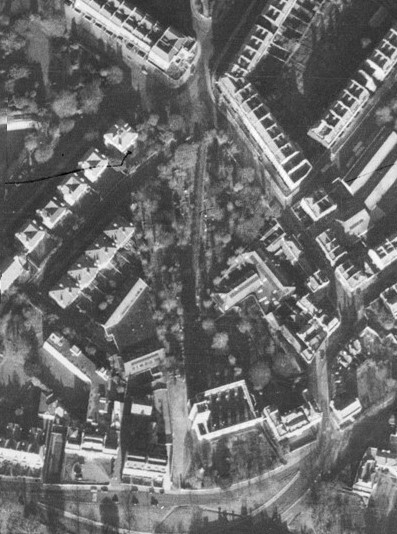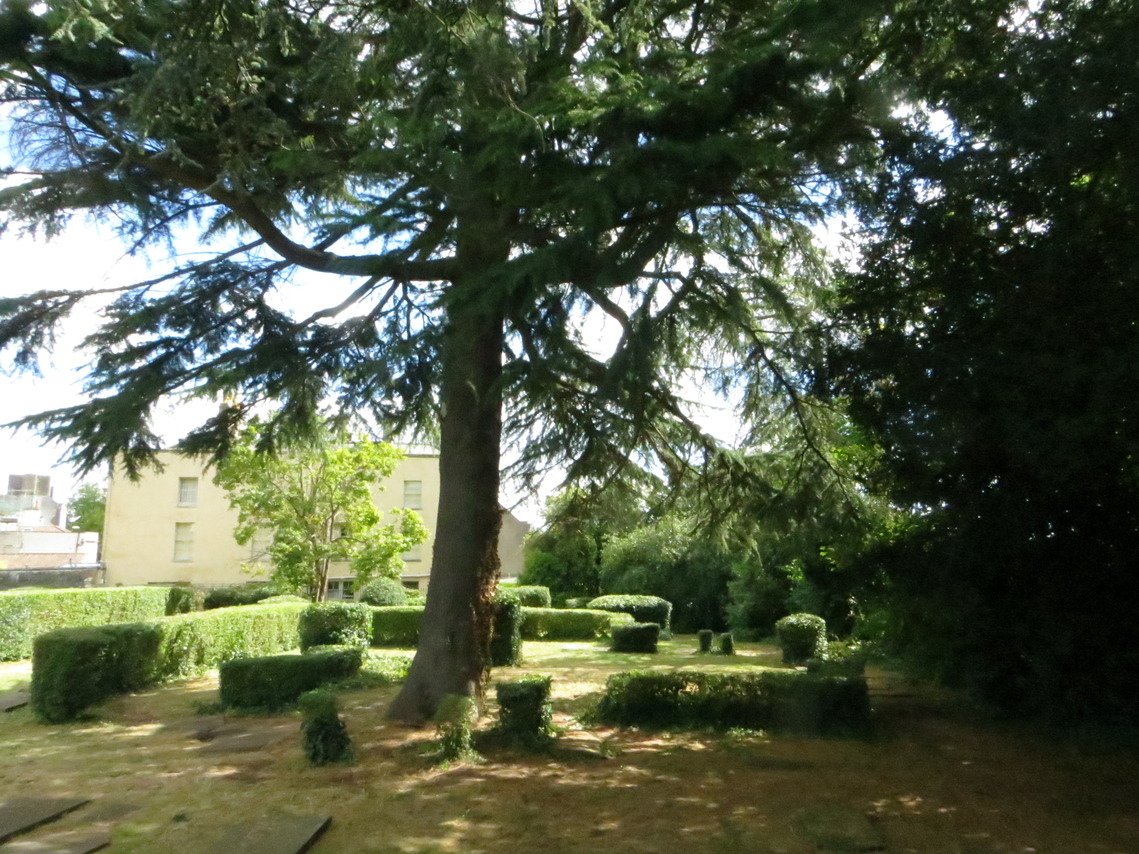From the top of Clifton Hill, St Andrew’s church dominated the local landscape for around 800 years. First appearing in the historical record at the end of the Norman period, St Andrew’s served the parish continuously until 24 November 1940, when it was bombed by the Luftwaffe during the Bristol Blitz.
Here is a summary of St Andrew’s history:
1154 William de Clifton gave the patronage of the parish church to the recently founded Abbey of St Augustine in Bristol. The parish, which stretched from Jacobs Wells to Durdham Down, was served by the monks for over a hundred years.
1278 Thomas of Kent, probably chaplain to the Lord of the Manor, Sir John St Lo, became Clifton’s first vicar.
1463 The parish church passed to the Bishop of Worcester and Westbury and until 1544, curates were appointed by Westbury College. After the Dissolution, patronage returned to the owner of Clifton manor.
This was quite a small building, with a short square tower at the west end, topped by four pinnacles and a central lantern.
1654 The church was re-built on its original foundations. Although the Norman building had survived the Siege of Bristol during the English Civil War, it was showing signs of decay.
1676 The Society of Merchant Venturers bought the first of two Clifton manors and acquired the second in 1686.
1680 Avon Gorge, St Vincent’s Rock and the curative properties of the Hot Well began to attract visitors to the area and in 1696 Hotwell House, the first pump room was built. While the spa attracted invalids in search of a cure, most visitors came for the lively social life.
1716 A north aisle was built at St Andrew’s church to accommodate the growing congregation.
1739 John Wesley was invited to preach at St Andrew’s and was less than impressed by his fellow worshippers:
“Seeing many rich at Clifton Church my heart was pained for them, and I was earnestly desirous that some, even of them, might enter into the Kingdom of Heaven.”
1768 Some of the wealthy Clifton residents, including the Goldney, Elton and Hobhouse families, funded the new south aisle at St Andrew’s, where they were granted private pews in perpetuity.
1769 The pinnacles and lantern on the tower were removed, the tower was heightened, and new pinnacles added.
St Andrews church, 1800 (BRO 17563/1/417)
1787 The ‘Old Churchyard’ was consecrated. St Andrew’s original burial ground was around the church, but by 1779 it had become overcrowded. The Vestry asked the Merchant Venturers to grant a plot of land at the foot of Honeypen Hill for a new graveyard and in 1787 the Society eventually agreed.
1808 The ‘Old Churchyard’ was enlarged.
1816 St Andrew’s once again proved too small for the expanding population and the foundation stone for a church seating 1600 worshippers was laid just to the north of the original building. Designed by architect James Foster, the total cost, including the much larger graveyard to the north of the church, was £18,000, a large part of which was raised by the sale of private pews.
1822 The new church was consecrated on 12th August. An event to celebrate the bicentenary was held on 14th August 2022 on the site of the old church.
1830 The congregation continued to grow and new churches were built across the parish to meet the needs of the expanding population. Holy Trinity, Hotwells consecrated in 1830; St Peter’s, Clifton Wood in 1835; St John the Evangelist in 1841; Christ Church in 1844; St Paul’s in 1853; All Saints in 1868; Emmanuel in 1869; St Andrew the Less in 1873 and St Anselm’s in 1897.
1898 The foundations of the original St Andrew’s church were uncovered and the outline preserved in privet.
St Andrews - two churches, 1822 (BRO PicBox/4/BCh/14)
St Andrews church, 1823 (BRO PicBox/4/BCh/16a)
St Andrews church, 1900s (Vaughan postcard BRO 43207/29/6/2)
St Andrews church interior (Vaughan postcard BRO 43207/29/6/17)
1920 The Clifton War Memorial, close to the foundations of the original church, was unveiled by Lieut. General Sir G M Harper KCB DSO on 10th October.
1922 Centenary of the consecration of the new St Andrew’s church.
1940 On 24th November, St Andrew’s church was bombed during the Bristol Blitz. D J Bendall, who was in the congregation during the raid, remembered:
“…going down into the crypt with the then Bishop of Bristol, Dr Woodward…and between 200 and 300 people singing hymns and songs to the accompaniment of a piano and violin. There we stayed until the building which was burning above us became too hot for safety.”
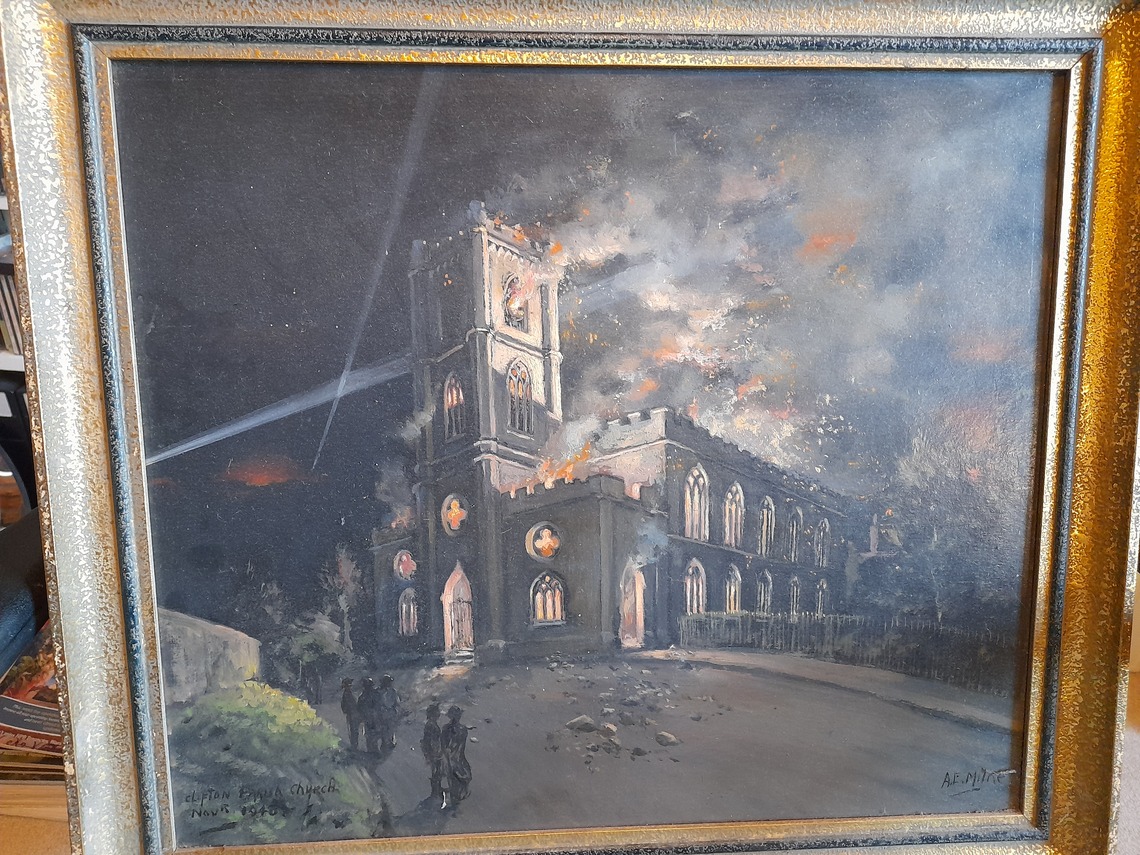

St Andrews church bomb damage - west end staircase, 1941 (BRO 6099/L22CLI)
1946 Aerial view of churchyard - ruins of St Andrew's at bottom (English Heritage)
1951 The Diocesan Reorganisation Committee decided not to rebuild the church and the parish of St Andrew was amalgamated with Christ Church.
1956 The ruins of St Andrew’s church were demolished.
The site of the church remains as an open lawned area, with the base of the walls still visible, and an inscribed stone plaque commemorating its fate.
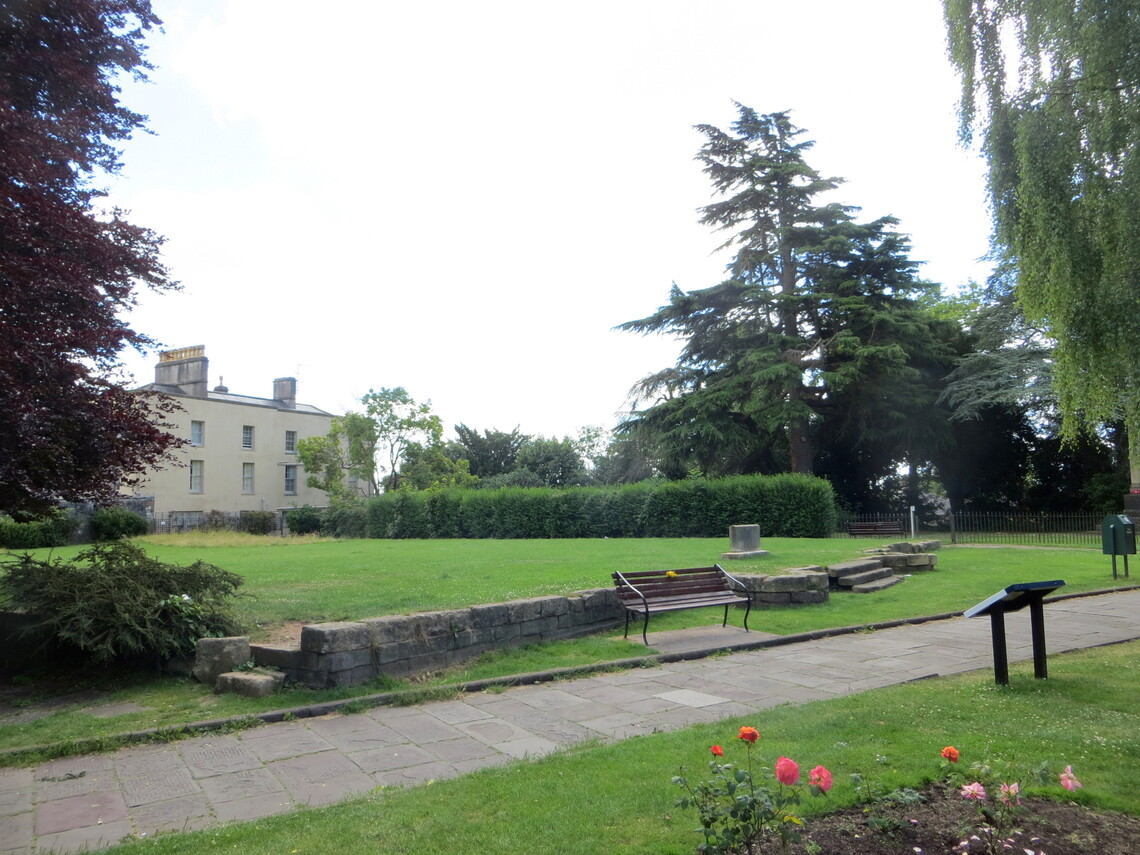
Site of 1822 St Andrew's church Hedge outline of early St Andrew's church. Cedar tree is on site of tower
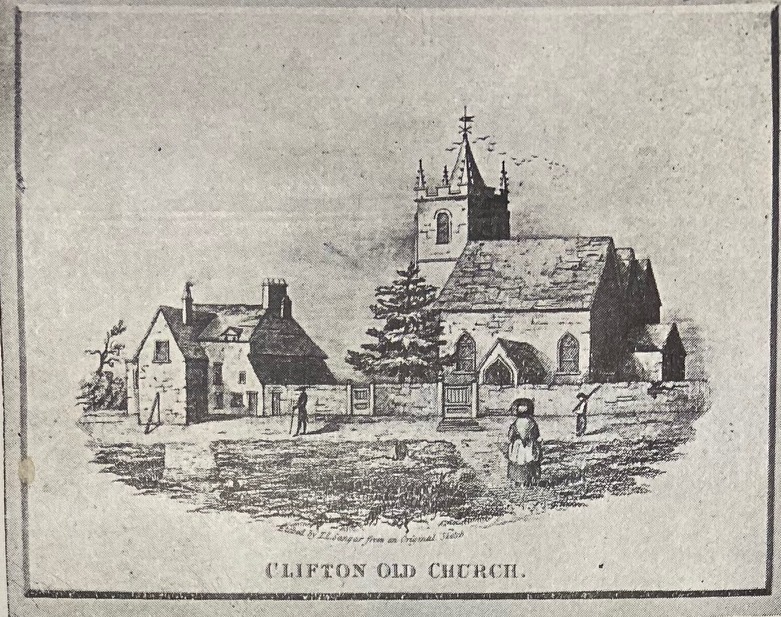
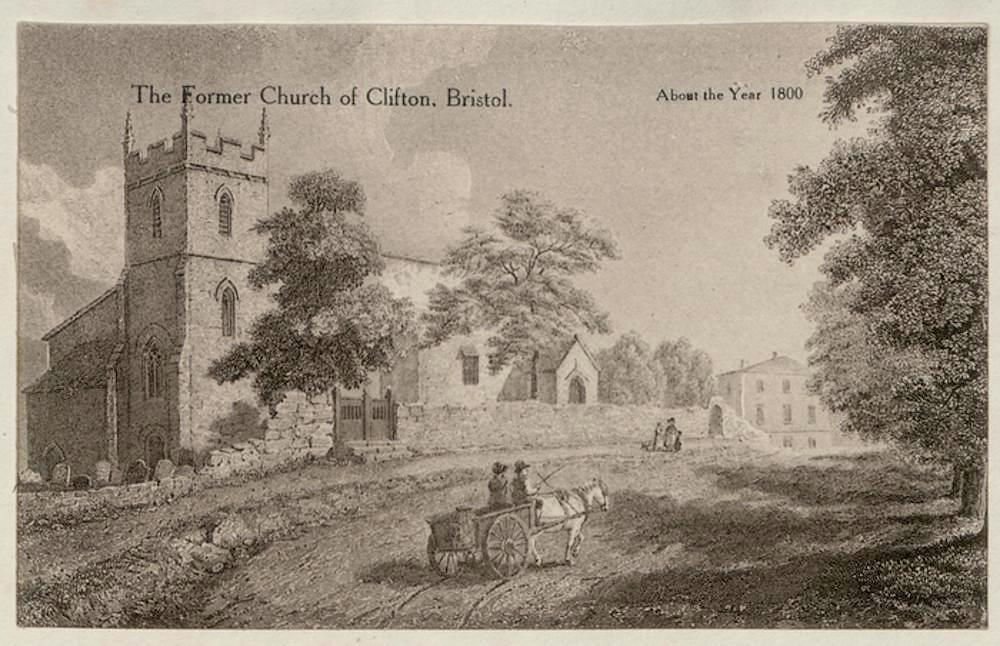
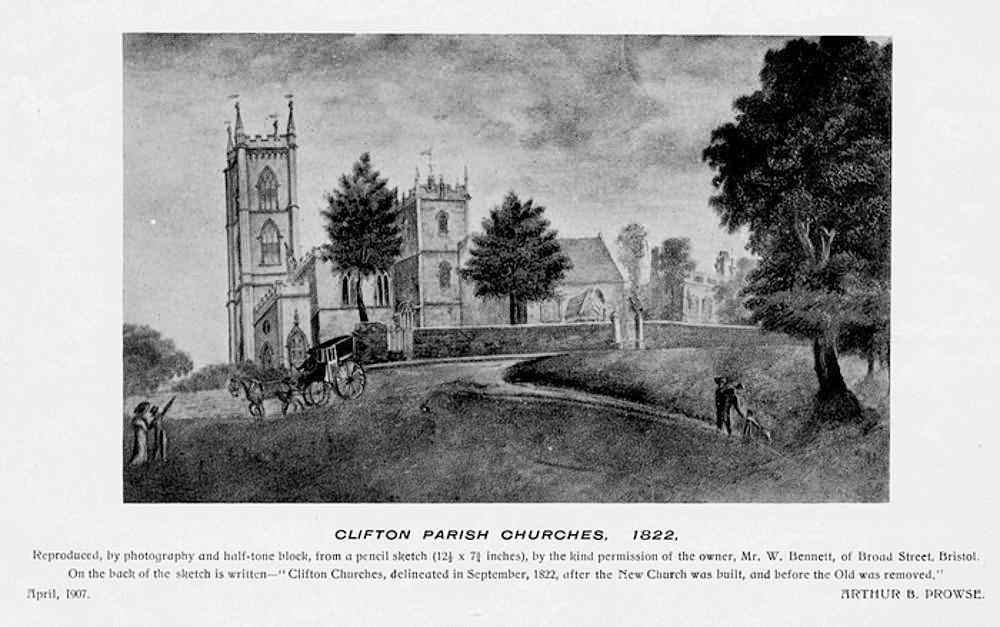
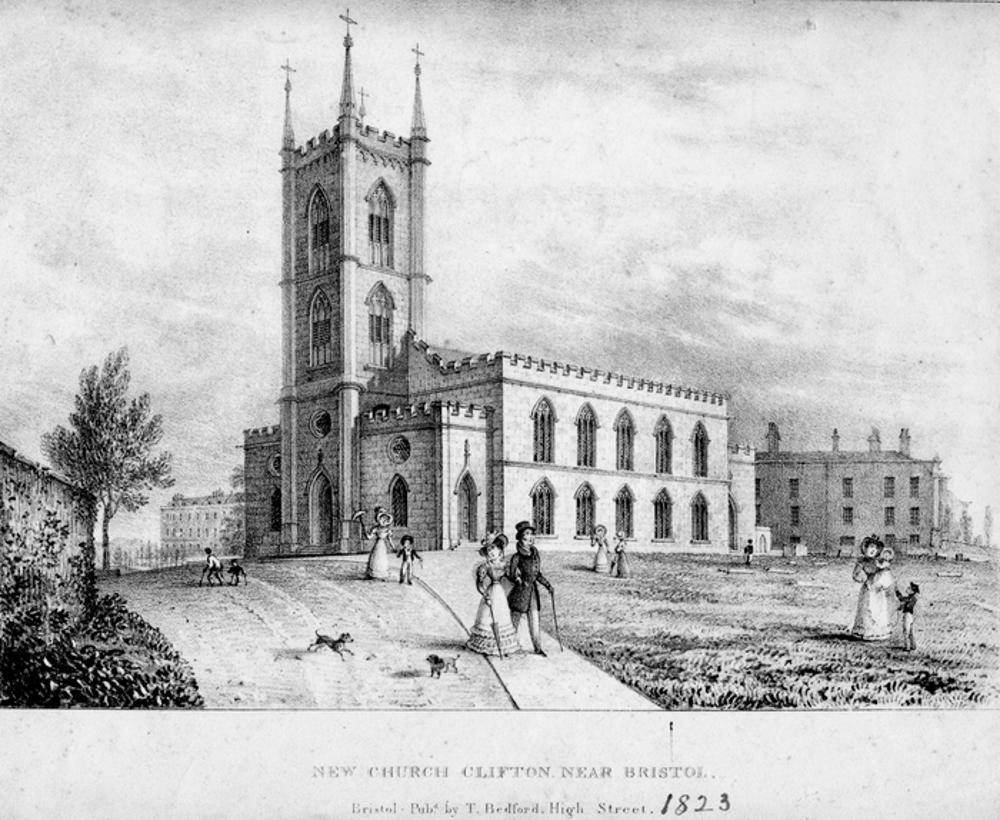
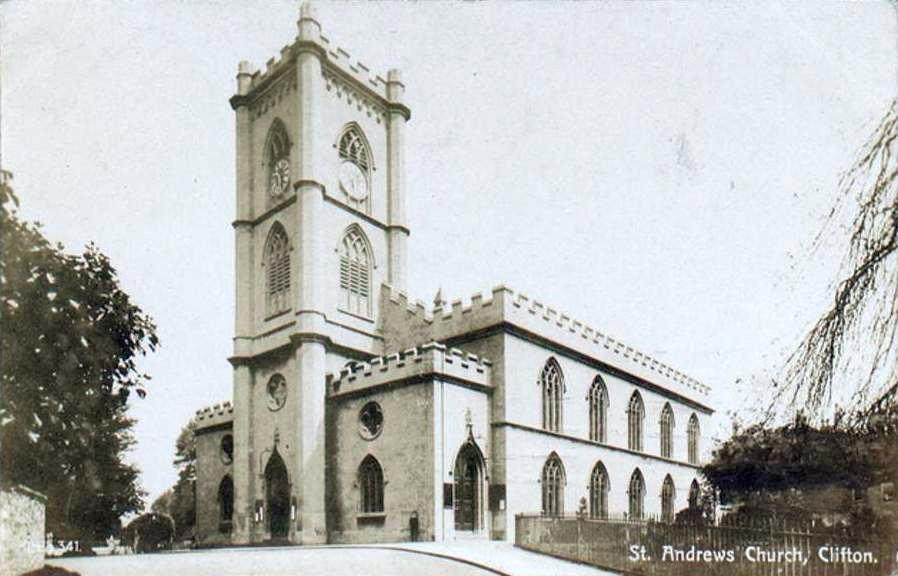

![St Andrews church bomb damage [west end staircase] (BRO 6099/L22CLI)](/friendsofbirdcagewalk/assets/images/st-andrews-church-bomb-damage-4)
